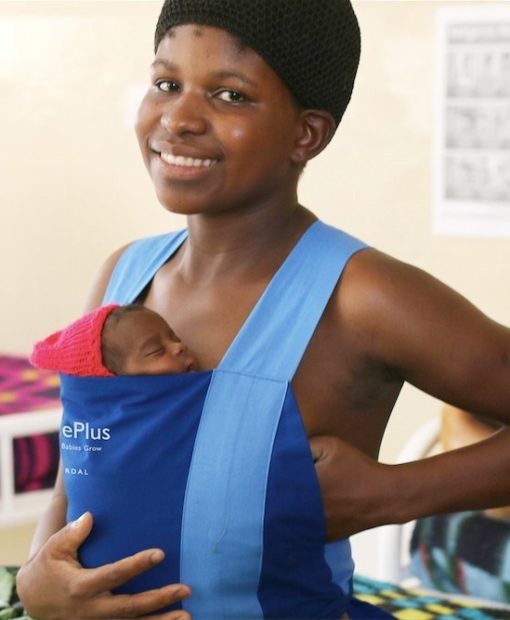Angelina Jolie’s Choice Not Uncommon for Women With Cancer Gene
Disclosure that she had ovaries removed spotlights issues faced by women with BRCA mutations
By Dennis Thompson
HealthDay Reporter
TUESDAY, March 24, 2015 (HealthDay News) — Angelina Jolie’s decision to talk about the removal of her ovaries has brought new public attention to what is actually standard preventive care for women whose genetics dramatically increase their risk of ovarian cancer, experts say.
In a column published Tuesday in the New York Times, Jolie wrote about deciding at age 39 to have her ovaries and fallopian tubes removed, based on the increased risk of ovarian cancer posed by a mutation she carries in the BRCA1 gene.
“It can seem awfully young, but that really is the standard of care, to consider removing the ovaries and fallopian tubes in the late 30s to early 40s, after women have completed their families,” said Dr. Jill Whyte, a gynecological oncologist at the North Shore-LIJ Cancer Institute in Lake Success, N.Y. “That’s because the risk of cancer does seem to increase quite a bit after age 40.”
Two years ago, Jolie announced that she had undergone a preventive double mastectomy, after learning that she carried a mutation in the BRCA1 gene that gave her an estimated 87 percent risk of breast cancer and a 50 percent risk of ovarian cancer.
She already had planned to follow up her mastectomy with removal of her ovaries, according to her column, but decided to move ahead with the surgery earlier than expected after a dodgy blood test renewed her cancer worries.
Jolie lost her mother, grandmother and aunt to cancer. Her mother’s ovarian cancer was diagnosed at age 49.
In her article, Jolie stressed that the decision to have her ovaries removed was personal, and should not be read as a call for all women with a BRCA1 gene mutation to follow in her footsteps.
“I did not do this solely because I carry the BRCA1 gene mutation, and I want other women to hear this. A positive BRCA test does not mean a leap to surgery,” she wrote. “There is more than one way to deal with any health issue. The most important thing is to learn about the options and choose what is right for you personally.”
Dr. Otis Brawley, chief medical officer for the American Cancer Society, said that’s a very important point that should be underscored.
Jolie’s specific BRCA1 mutation dramatically increases her risk of breast and ovarian cancer, but other women carry BRCA mutations that only influence their risk mildly or moderately, Brawley explained. Surgery might not be the best option for them.
“If I had been advising her, I would have advised her to do much as she has done, including the research that she did before making her decisions to have surgery,” he said. “At the same time, I do worry there’s a lot of very low-risk women who opt for surgery, and if they understood how low their risk is, they would not.”
Other women might benefit more by receiving regular check-ups and taking medications shown to reduce cancer risk, Brawley said.
But by so openly discussing her decision, Jolie has removed some of the mystery surrounding what is a common procedure to prevent a particularly deadly cancer, said Dr. David Fishman, a gynecological oncologist at The Mount Sinai Hospital and director of the Mount Sinai Ovarian Cancer Risk Assessment Program.
“I think her willingness to make a topic common knowledge and take it out of the shadows is heroic, because she’s going to make individuals think about this and I think she’s going to be responsible for saving many people’s lives,” Fishman said.
About 1.4 percent of women in the general population will develop ovarian cancer sometime during their lives, according to the U.S. National Cancer Institute.
By contrast, 39 percent of women who inherit a harmful BRCA1 mutation and 11 percent to 17 percent of women who inherit a harmful BRCA2 mutation will develop ovarian cancer by age 70, the cancer institute says.
Doctors recommend removal of the ovaries as a preventive measure for women with dangerous BRCA mutations because ovarian cancer is tough to detect and often fatal, Fishman and Whyte said. There are no good screening tests that reliably detect ovarian cancer at an early and curable stage.
“Today, 75 percent of women who are diagnosed with ovarian cancer have advanced-stage cancer at the time of diagnosis, and between 15 and 30 percent of these women survive the cancer,” Fishman said.
In general, doctors recommend that these high-risk women consider ovary removal once they are done with childbearing, between age 35 and 40, he said.
They will still need to be monitored for other forms of cancer, since BRCA mutations also have been linked to melanoma and cancers of the thyroid gland, colon and gastrointestinal tract, Fishman said. Removing the ovaries and the breasts takes away the organs at highest BRCA-related risk for cancer.
Going forward, Jolie wrote that she already has mapped out her hormones for estrogen or progesterone replacement, since removal of the ovaries puts a woman into forced menopause.
Hormone replacement is actually a safer option for women in Jolie’s shoes, who have had both their breasts and their ovaries removed, Whyte said. Women who still have their breasts need to weigh the risks of hormone replacement therapy with their doctors, since such therapy can increase the risk of breast cancer.
Whyte stressed that doctors also have other ways to treat the most common symptoms and side effects of menopause.
Women going through menopause typically experience hot flashes, night sweats, mood changes and sleep disturbances, Whyte said. They also have increased long-term risk of osteoporosis and heart problems.
As a result, women who have had their ovaries removed are encouraged to sustain their calcium intake, get regular exercise and maintain a healthy weight, Whyte said — just like any other woman going through menopause.
Brawley, Whyte and Fishman all recommended that women with a family history of cancer see a genetic counselor, who can assess the cancer risk posed not just by their BRCA genes but all the genes that have been previously related to cancer.
“What I’d like women to take from [Jolie’s] courageous story is you need to learn about this, and sit down and make very considered decisions,” Brawley said. “They should go to a licensed genetic counselor, who is frequently not a physician, and find out more about all the genes that influence their cancer risk.”
More information
For more information on the BRCA gene and cancer risk, visit the U.S. National Cancer Institute.
SOURCES: Jill Whyte, M.D., gynecological oncologist, North Shore-LIJ Cancer Institute, Lake Success, N.Y.; Otis Brawley, M.D., F.A.C.P., chief medical officer, American Cancer Society; David Fishman, M.D., gynecological oncologist, The Mount Sinai Hospital, and director, Mount Sinai Ovarian Cancer Risk Assessment Program; March 24, 2015, New York Times
Copyright © 2015 HealthDay. All rights reserved.

 March 25, 2015
March 25, 2015





 June 26, 2017
June 26, 2017 



